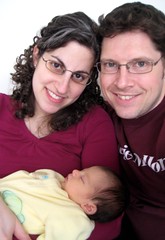Written in Phnom Penh, Cambodia
Posted from Negombo, Sri Lanka
Lizzi's already mentioned why we wanted to go to Laos, but you don't get to meet Hmong villagers in the city. No, they still live in the hills and mountains as they have for many, many years. So the only way to really meet them is to go to them, which is exactly what we did. Shortly after arriving in Luang Prabang, we booked ourselves on a two-day trek through the hills east of Luang Prabang. We ate lunch in a Hmong village, stayed overnight with the Khmu, and played with all of the kids along the way.
We went with Lizzy and Tom, who we met on the drive from Chiang Mai to the Laos border. That night in the Khmu village, we met a couple from London on their honeymoon, Tom and Jan. Although they had biked to the village earlier in the day, they were taking the same route back to town, so we joined our trekking parties and sallied forth.
We visited three Khmu villages along the way. These villages are small, less than 100 households each. For the most part, they are subsistence farmers, but they also make whisky, which is distilled and then poured into a bottle containing a snake or scorpion. These bottles of nasty-looking yellow liquid are sold all around Laos. We even spotted a bunch in Luang Prabang. Our guide told us that men will drink the snake-infused whisky to be more potent, and old folks will drink the scorpion-infused stuff to gain energy and strength.
Our trekking company, Tiger Trails, participates in "Fair Treks". Proceeds from our tourist dollars go directly to each village. In fact, in the first village we stopped in, we visited a primary school that was paid for entirely by funds from these "Fair Treks". Fair treks also ensure a level of sustainable tourism for these villages. Tourists only visit a few villages among the "Fair Trek" network to ensure that the villages don't become dependent on tourists and ruin a traditional way of life. That said, it means that trekking parties are kept very small, less than 7 people per group.
In the Hmong villages, we only met women and yound children. School-age kids live in the city, near the school, Monday through Friday. Men were hunting, working with the livestock, or tending to the fields.
The trek itself started gently, but just over an hour into it, the going got tough. In fact, the going went vertical. Simple footpaths used for generations meander through the steep hills. We found ourselves drenched in sweat in the heat, fighting to catch our breath as we ascended the muddy, boulder-strewn paths of the hills. There are shortcuts, our guide tells us, but they are much more grueling. By the end of the day, we were exhausted, ready to wash the trail dust off and relax for the evening.
Our guide prepared us dinner, while we wandered the village. Just before we set off to explore the small hamlet, the guide walked past us with a live duck. A real live duck with wings and feathers and it quacked. We didn't actually watch him kill it, but we did watch him boil it. While it was still twitching. Needless to say, none of us were terribly hungry that night. Even less so, when our guide interrupts the meal to fish the boiled duck head out of Jan's bowl of soup.
After dinner, we drank. Our guides supplied the lao-lao (Lao whiskey) and some of the local crop. Lizzy and Tom had a tiny bottle of Scotch that we worked through as well. The results of this episode have already been explained.
The next day proved to be much easier going. Mostly downhill with a few bumps along the way. We reached another village, where we played with the kids and Tom (of Tom and Jan) tried to impress a few with his juggling abilities. One little boy carried a chicken under his arm, the way Linus would carry his security blanket; both he and the chicken seemed quite content with this situation. By early afternoon, we reached the river and took a long-tail boat to a spectacular waterfall, where the water was deep blue and crystal clear. We splashed around and swam in the frigid water for a while, thankful to have something vaguely resembling a bath. Then our guide rounded us up and we headed back to Luang Prabang.
The trek was excellent. Afterwards, I felt less slothful than I'd been feeling before hand. Somehow it also made our trip feel less like a vacation and more like we had actually learned and experienced something. I was also deeply impressed with the children we met along the way. Some of them were going to school, and some were probably working to help their families and the village. But most of the kids were just being kids. They laughed and smiled and generally appeared to be happy. With no television, no X-Box, no Gap. These kids were happy with a simple wooden top or even just a bunch of sticks. Even an empty water bottle provided hours of amusement. But they laughed and giggled and smiled. At the end of the trek, this was the single most important point that I kept coming back to. Despite the oppressive poverty and the abundant discrimination against the hill tribes, kids can still be kids.
Subscribe to:
Post Comments (Atom)




2 comments:
Incredible and fascinating.... the pics are amazing. Makes me want to go visit them myself.
Your pictures are phenomenal!
Post a Comment